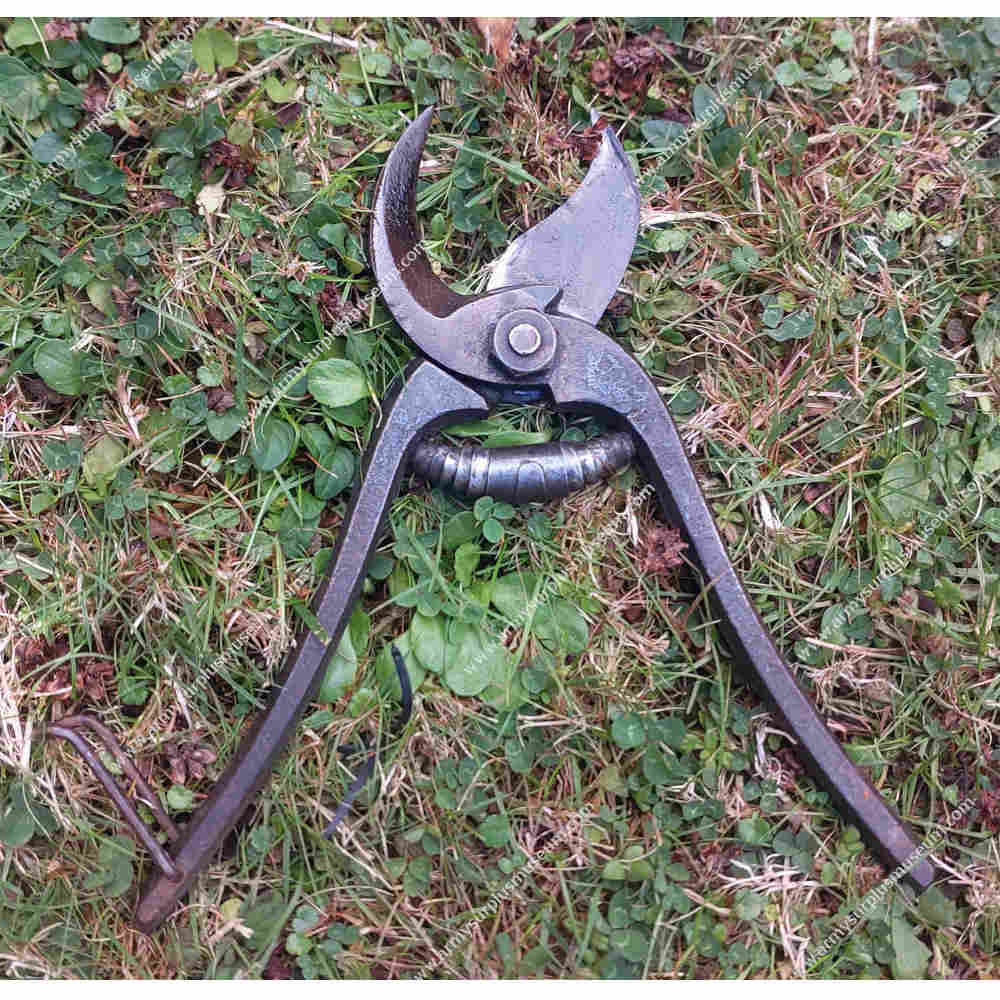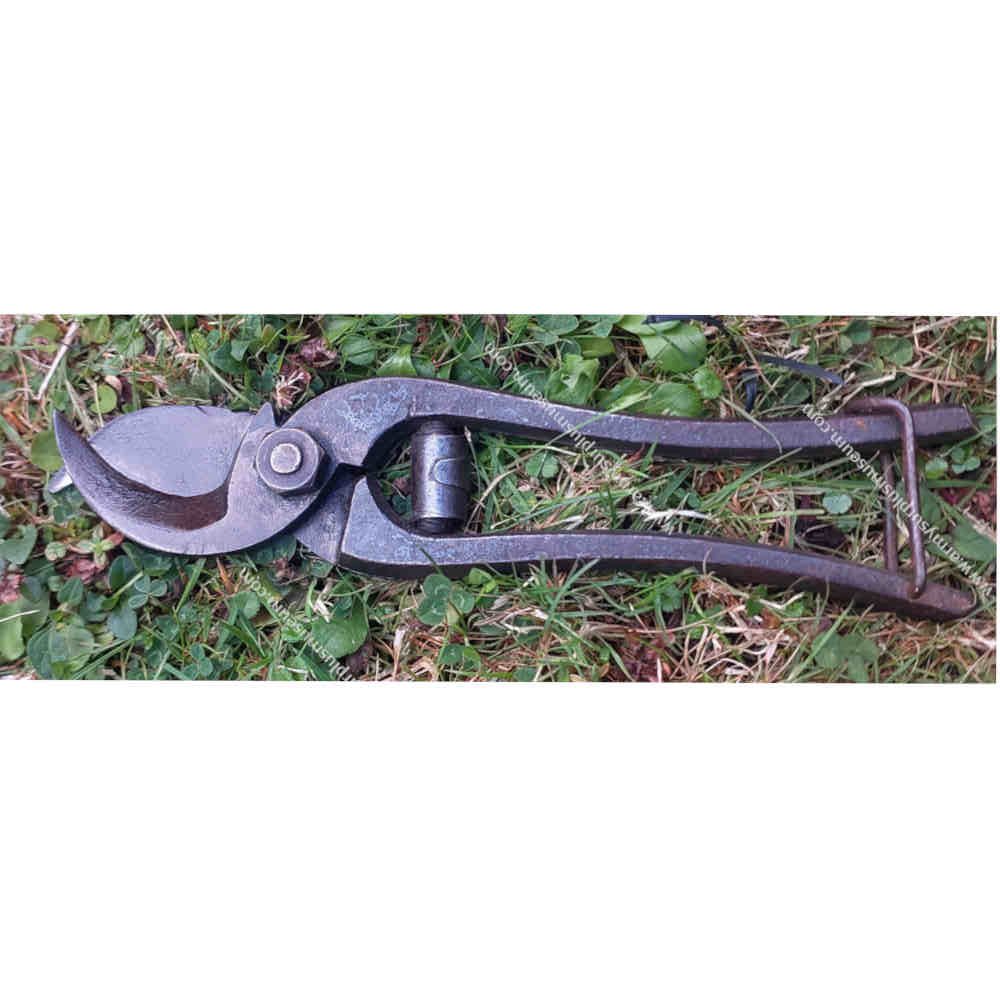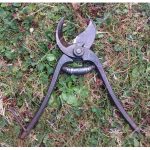Secateurs (Parrot Beak)

General Information
Name: Secateurs
Country of Origin: Yet to identified.
Manufacturer: Yet to identified.
Date of Production: c 1960.
Colour: Black.
Size:
Length- 20cm.
Width- 4.5cm.
Weight: 270g.
History
Secateurs—a hand tool more commonly found in the garden shed and often wielded by old ladies trimming rose bushes—are not something most people associate with soldiers. Yet, these heavy-duty shears, designed for cutting and pruning bushes and small trees, found their way into the kit of Australian and New Zealand troops operating in dense jungle environments.
With a strong farming background and a practical mindset, ANZAC soldiers quickly recognized the advantages of secateurs over machetes. Unlike a machete, which can be used with one hand but requires broad strokes and makes a lot of noise, secateurs allowed a soldier to cut through vegetation quietly while keeping their weapon at the ready—always pointed in the direction of a potential enemy. Additionally, secateurs were compact, easier to carry in webbing or a field pack, and didn’t require the broad swings that could compromise stealth.
These were not military-issue tools. Instead, soldiers bought them straight from hardware stores or grabbed them from farm sheds before being deployed to Asia and were also used in the bush back home. The secateurs used by New Zealand and Australian troops were just standard, off-the-shelf pruning shears, the same type a farmer or gardener would use back home.
During the Vietnam War, New Zealand soldiers used secateurs to silently cut their way through the jungle, avoiding detection from enemy forces who remained unaware of their movements. Their practicality ensured that they remained a trusted tool for New Zealand soldiers, continuing to see use in modern jungle warfare.
A tool of the garden? Maybe. A tool of the jungle? Without a doubt.
Description
Early secateurs were produced using cast metal, with the handles formed as left and right sections. More modern versions are manufactured using advanced production techniques, improving durability and efficiency.
The two handle sections are secured together with a heavy-duty nut, typically made from the same material as the handles. The internal spring mechanism is generally made from stainless steel, providing durability and resistance to rust while maintaining reliable tension for repeated cutting.
When closed, the blades are held in place by a simple, free-moving wire catch, which is permanently attached to one of the handles. Some models also feature a built-in wire cutter, incorporated into one side of the blades for added versatility.
Examples
Example One
This model features a Parrot Beak blade, which is ideal for trapping vegetation before cutting. It also has a wire cutter for lightweight gauge wires, typically found in gardens. The only marking is “426” stamped on the edge of one of the blades, which is most likely a batch number.
Object Number: 5860-554-45101



